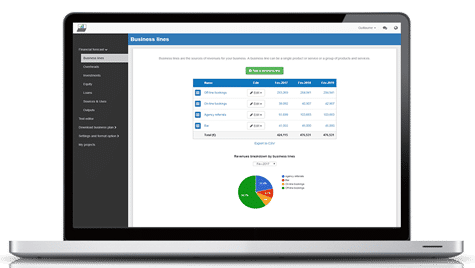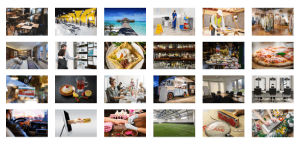How to create a financial forecast for a tequila bar?
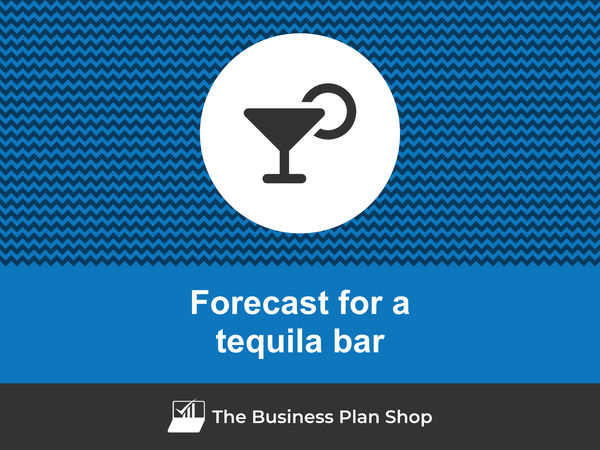
Developing and maintaining an up-to-date financial forecast for your tequila bar is key in order to maintain visibility on your business’s future cash flows.
If you feel overwhelmed at the thought of putting together a tequila bar financial forecast then don’t worry as this guide is here to help you.
We'll cover everything from: the main objectives of a financial forecast, the data you need to gather before starting, to the tables that compose it, and the tools that will help you create and maintain your forecast efficiently.
Let's get started!
Why create and maintain a financial forecast for a tequila bar?
In order to prosper, your business needs to have visibility on what lies ahead and the right financial resources to grow. This is where having a financial forecast for your tequila bar becomes handy.
Creating a tequila bar financial forecast forces you to take stock of where your business stands and where you want it to go.
Once you have clarity on the destination, you will need to draw up a plan to get there and assess what it means in terms of future profitability and cash flows for your tequila bar.
Having this clear plan in place will give you the confidence needed to move forward with your business’s development.
Having an up-to-date financial forecast for a tequila bar is also useful if your trading environment worsens, as the forecast enables you to adjust to your new market conditions and anticipate any potential cash shortfall.
Finally, your tequila bar's financial projections will also help you secure financing, as banks and investors alike will want to see accurate projections before agreeing to finance your business.
Need a solid financial forecast?
The Business Plan Shop does the maths for you. Simply enter your revenues, costs and investments. Click save and our online tool builds a three-way forecast for you instantly.
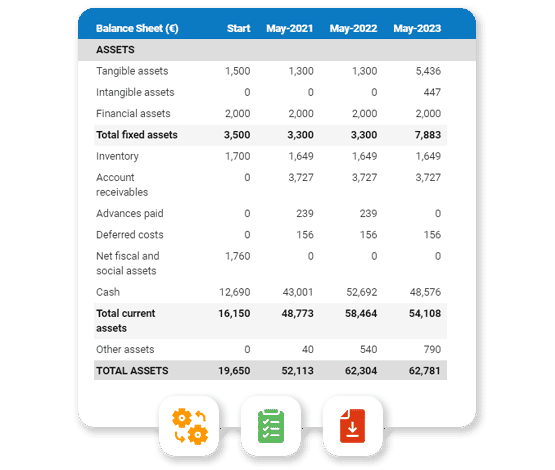
What information is used as input to build a tequila bar financial forecast?
A tequila bar's financial forecast needs to be built on the right foundation: your assumptions.
The data required to create your assumptions will depend on whether you are a new or existing tequila bar.
If you are creating (or updating) the forecast of an existing tequila bar, then your main inputs will be historical accounting data and operating metrics, and your team’s view on what to expect for the next three to five years.
If you are building financial projections for a new tequila bar startup, you will need to rely on market research to form your go-to-market strategy and derive your sales forecast.
For a new venture, you will also need an itemised list of resources needed for the tequila bar to operate, along with a list of equipment required to launch the venture (more on that below).
Now that you understand what is needed, let’s have a look at what elements will make up your tequila bar's financial forecast.
The sales forecast for a tequila bar
From experience, it usually makes sense to start your tequila bar's financial projection with the revenues forecast.
The inputs used to forecast your sales will include the historical trading data of your tequila bar (which can be used as a starting point for existing businesses) and the data collected in your market research (which both new ventures and existing businesses need to project their sales forward).
Your tequila bar's sales forecast can be broken down into two key estimates:
- The average price
- The number of monthly transactions
To assess these variables accurately, you will need to consider the following factors:
- Seasonal Demand: As a tequila bar owner, you know that the demand for tequila tends to increase during the summer months. This is due to the popularity of tequila-based cocktails and the association of tequila with warmer weather. As a result, you can expect an increase in average price and number of monthly transactions during peak summer months.
- Availability of Premium Tequila: The quality of tequila can greatly affect its price. If there is a limited supply of premium tequila, you may need to increase your prices to maintain profitability. On the other hand, if there is an abundance of premium tequila, you may choose to offer lower prices to attract customers and increase monthly transactions.
- Economic Conditions: Economic conditions can also impact the average price and number of monthly transactions at your tequila bar. During a recession, consumers may be more price-conscious and opt for cheaper alternatives, resulting in a decrease in your average price and number of transactions. Conversely, during a strong economy, consumers may be more willing to spend on luxury items like premium tequila, leading to an increase in both average price and number of transactions.
- Competition: The level of competition in your area can also affect your tequila bar's average price and number of monthly transactions. If there are other tequila bars in the vicinity, you may need to adjust your prices to remain competitive. Additionally, if your competitors offer unique or trendy tequila-based drinks, you may need to update your menu to keep up with current trends and attract more customers.
- Customer Demographics: The demographics of your target customers can also play a role in your tequila bar's sales forecast. For example, if your bar is located in an area with a high concentration of young professionals, you may be able to charge higher prices for premium tequila and see an increase in monthly transactions. On the other hand, if your bar is in an area with a large elderly population, you may need to adjust your prices and offerings accordingly.
Once you have a sales forecast in place, the next step will be to work on your overhead budget. Let’s have a look at that now.
Need inspiration for your business plan?
The Business Plan Shop has dozens of business plan templates that you can use to get a clear idea of what a complete business plan looks like.
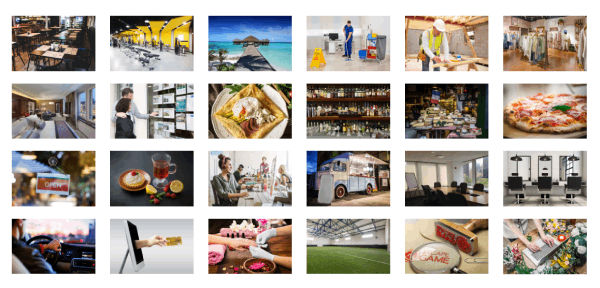
The operating expenses for a tequila bar
The next step is to estimate the costs you’ll have to incur to operate your tequila bar.
These will vary based on where your business is located, and its overall size (level of sales, personnel, etc.).
But your tequila bar's operating expenses should normally include the following items:
- Staff costs: This includes the salaries, wages, and benefits of your bartenders, servers, cooks, and other staff members. You may also need to factor in additional costs such as uniforms and training.
- Accountancy fees: As a business owner, you'll need to keep track of your finances and file taxes. Hiring an accountant to assist with this can help ensure accuracy and compliance with tax laws.
- Insurance costs: Running a tequila bar comes with its fair share of risks, so it's important to have insurance to protect your business. This may include general liability insurance, liquor liability insurance, and property insurance.
- Software licenses: To streamline your operations, you may need to invest in software for point-of-sale systems, inventory management, and employee scheduling.
- Banking fees: Your business will likely have a variety of banking needs, such as setting up a business account, processing credit card payments, and obtaining loans or lines of credit. Be sure to factor in any associated fees.
- Rent: The cost of renting a space for your tequila bar will likely be one of your biggest expenses. Consider the location, size, and amenities of the space when budgeting for rent.
- Utilities: Keeping your bar running requires electricity, water, and possibly gas. These costs can add up, so it's important to budget for them.
- Inventory: Your bar will need a steady supply of tequila, mixers, garnishes, and other ingredients. Keeping track of your inventory and budgeting for replenishment is crucial for a successful business.
- Marketing and advertising: Getting the word out about your tequila bar is essential for attracting customers. This may include costs for creating a website, social media marketing, and print materials.
- Cleaning and maintenance: To keep your bar clean and well-maintained, you may need to hire a cleaning crew or invest in cleaning supplies and equipment.
- Licenses and permits: Operating a tequila bar requires various licenses and permits, such as a liquor license and health permits. These may come with fees that need to be factored into your budget.
- Music and entertainment: If you plan to have live music or other forms of entertainment at your bar, you'll need to budget for paying performers and obtaining necessary licenses.
- Repairs and maintenance: As with any business, unexpected repairs and maintenance costs may arise. It's important to have some funds set aside for these expenses.
- Taxes and fees: In addition to accounting fees, you'll also need to budget for taxes and any other government fees or assessments.
- Credit card processing fees: If you accept credit card payments, you'll need to factor in the processing fees charged by the credit card companies.
This list is not exhaustive by any means, and will need to be tailored to your tequila bar's specific circumstances.
What investments are needed to start or grow a tequila bar?
Your tequila bar financial forecast will also need to include the capital expenditures (aka investments in plain English) and initial working capital items required for the creation or development of your business.
For a tequila bar, these could include:
- Bar Equipment: This includes items such as a commercial-grade blender, shaker, strainer, and citrus press. These items are essential for creating and serving tequila-based cocktails.
- Furniture and Fixtures: This includes tables, chairs, bar stools, and lighting fixtures. Investing in high-quality and comfortable furniture can enhance the overall ambiance of your tequila bar and attract more customers.
- Glassware: A tequila bar would require different types of glassware for serving different types of tequila. This may include shot glasses, margarita glasses, and highball glasses. It is important to have a sufficient quantity of each type of glassware to meet customer demand.
- POS System: A point-of-sale (POS) system is essential for tracking sales, managing inventory, and processing payments. A tequila bar may also benefit from a POS system with features such as age verification and inventory management specific to tequila.
- Security System: As a business owner, it is important to protect your investment. A security system that includes cameras, alarms, and access control can help prevent theft and ensure the safety of your customers and employees.
Again, this list will need to be adjusted according to the size and ambitions of your tequila bar.
Need a convincing business plan?
The Business Plan Shop makes it easy to create a financial forecast to assess the potential profitability of your projects, and write a business plan that’ll wow investors.
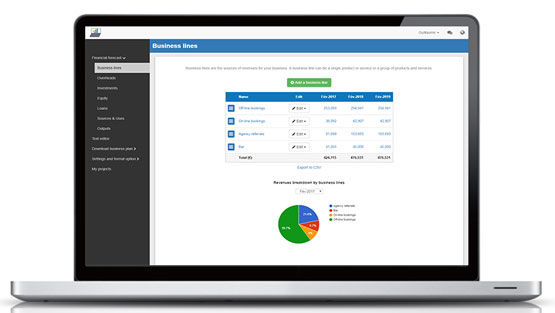
The financing plan of your tequila bar
The next step in the creation of your financial forecast for your tequila bar is to think about how you might finance your business.
You will have to assess how much capital will come from shareholders (equity) and how much can be secured through banks.
Bank loans will have to be modelled so that you can separate the interest expenses from the repayments of principal, and include all this data in your forecast.
Issuing share capital and obtaining a bank loan are two of the most common ways that entrepreneurs finance their businesses.
What tables compose the financial plan for a tequila bar?
Now let's have a look at the main output tables of your tequila bar's financial forecast.
The profit & loss forecast
The forecasted profit & loss statement will enable you to visualise your tequila bar's expected growth and profitability over the next three to five years.

A financially viable P&L statement for a tequila bar should normally show:
- Sales growing above inflation
- Stable or expanding (ideally) profit margins
- A net profit
This will of course depend on the stage of your business: a new venture might be loss-making until it reaches its breakeven point in year 2 or 3, for example.
The projected balance sheet
Your tequila bar's forecasted balance sheet enables you to assess your financial structure and working capital requirements.
It is composed of three types of elements: assets, liabilities and equity:
- Assets: represent what the business owns and uses to produce cash flows. It includes resources such as cash, equipment, and accounts receivable (money owed by clients).
- Liabilities: represent funds advanced to the business by lenders and other creditors. It includes items such as accounts payable (money owed to suppliers), taxes due and loans.
- Equity: is the combination of what has been invested by the business owners and the cumulative profits and losses generated by the business to date (which are called retained earnings). Equity is a proxy for the value of the owner's stake in the business.

The projected cash flow statement
A projected cash flow statement for a tequila bar is used to show how much cash the business is generating or consuming.

The cash flow forecast is usually organised by nature to show three key metrics:
- The operating cash flow: do the core business activities generate or consume cash?
- The investing cash flow: how much is the business investing in long-term assets (this is usually compared to the level of fixed assets on the balance sheet to assess whether the business is regularly maintaining and renewing its equipment)?
- The financing cash flow: is the business raising new financing or repaying financiers (debt repayment, dividends)?
Cash is king and keeping an eye on future cash flows is imperative for running a successful business. Therefore, you should pay close attention to your tequila bar's cash flow forecast.
If you are trying to secure financing, note that it is customary to provide both yearly and monthly cash flow forecasts in a financial plan - so that the reader can analyze seasonal variation and ensure the tequila bar is appropriately capitalised.
Need a solid financial forecast?
The Business Plan Shop does the maths for you. Simply enter your revenues, costs and investments. Click save and our online tool builds a three-way forecast for you instantly.

Which tool should you use to create your tequila bar's financial forecast?
Using the right tool or solution will make the creation of your tequila bar's financial forecast much easier than it sounds. Let’s explore the main options.
Using online financial forecasting software to build your tequila bar's projections
The modern and easiest way is to use professional online financial forecasting software such as the one we offer at The Business Plan Shop.
There are several advantages to using specialised software:
- You can easily create your financial forecast by letting the software take care of the financial calculations for you without errors
- You have access to complete financial forecast templates
- You get a complete financial forecast ready to be sent to your bank or investors
- You can easily track your actual financial performance against your financial forecast, and recalibrate your forecast as the year goes by
- You can create scenarios to stress test your forecast's main assumptions
- You can easily update your forecast as time goes by to maintain visibility on future cash flows
- You have a friendly support team on standby to assist you when you are stuck
- It’s cost-efficient and much cheaper than using an accountant or consultant (see below)
If you are interested in this type of solution, you can try our forecasting software for free by signing up here.
Calling in a financial consultant or chartered accountant
Outsourcing the creation of your tequila bar financial forecast is another possible solution.
This will cost more than using software as you can expect as your price will have to cover the accountant’s time, software cost, and profit margin.
Price can vary greatly based on the complexity of your business. For a small business, from experience, a simple three-year financial forecast (including a balance sheet, income statement, and cash flow statement) will start at around £700 or $1,000.
Bear in mind that this is for forecasts produced at a single point in time, updating or tracking your forecast against actuals will cost extra.
If you decide to outsource your forecasting:
- Make sure the professional has direct experience in your industry and is able to challenge your assumptions constructively.
- Steer away from consultants using sectorial ratios to build their client’s financial forecasts (these projections are worthless for a small business).
Why not use a spreadsheet such as Excel or Google Sheets to build your tequila bar's financial forecast?
You and your financial partners need numbers you can trust. Unless you have studied finance or accounting, creating a trustworthy and error-free tequila bar financial forecast on a spreadsheet is likely to prove challenging.
Financial modelling is very technical by nature and requires a solid grasp of accounting principles to be done without errors. This means that using spreadsheet software like Excel or Google Sheets to create accurate financial forecasts is out of reach for most business owners.
Creating forecasts in Excel is also inefficient nowadays:
- Software has advanced to the point where forecasting can be done much faster and more accurately than manually on a spreadsheet.
- With artificial intelligence, the software is capable of detecting mistakes and helping decision-making.
Spreadsheets are versatile tools but they are not tailor-made for reporting. Importing your tequila bar's accounting data in Excel to track actual vs. forecast is incredibly manual and tedious (and so is keeping forecasts up to date). It is much faster to use dedicated financial planning tools like The Business Plan Shop which are built specially for this.
Need a convincing business plan?
The Business Plan Shop makes it easy to create a financial forecast to assess the potential profitability of your projects, and write a business plan that’ll wow investors.

Use our financial forecast templates for inspiration
The Business Plan Shop has dozens of financial forecast examples available.
Our templates contain both a financial forecast and a written business plan which presents, in detail, the company, the team, the strategy, and the medium-term objectives.
Our templates are a great source of inspiration, whether you just want to see what a complete business plan looks like, or are looking for concrete examples of how you should model financial elements in your own forecast.
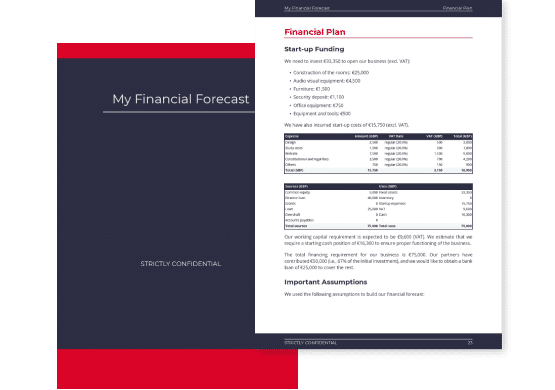
Takeaways
- A financial forecast shows expected growth, profitability, and cash generation metrics for your tequila bar.
- Tracking actuals vs. forecast and having an up-to-date financial forecast is key to maintaining visibility on your future cash flows.
- Using financial forecasting software is the modern way of creating and maintaining financial projections.
We hope that this guide helped you gain a clearer perspective on the steps needed to create the financial forecast for a tequila bar. Don't hesitate to contact us if you have any questions!
Need inspiration for your business plan?
The Business Plan Shop has dozens of business plan templates that you can use to get a clear idea of what a complete business plan looks like.

Also on The Business Plan Shop
Know someone who runs a tequila bar? Share our business guide with them!

